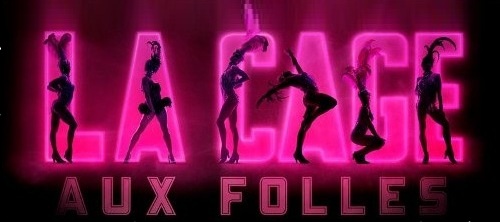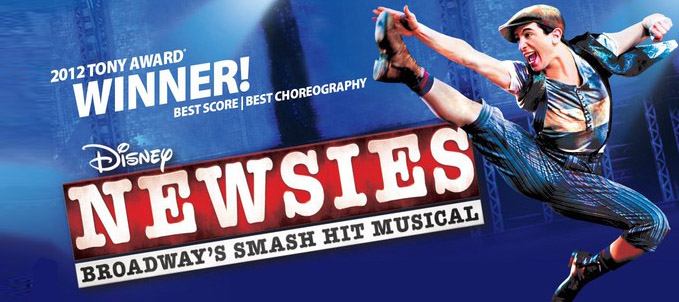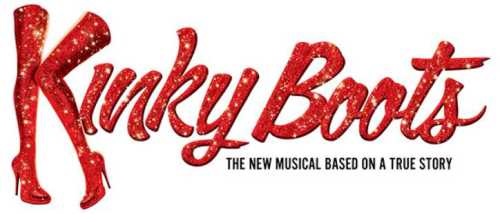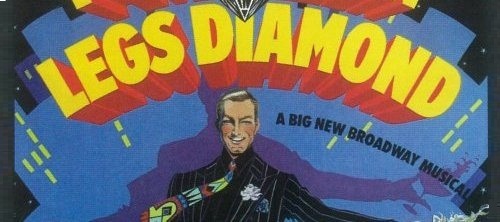Pas de biographie disponible.
Compositeur Musique additionelle Librettiste Parolier Metteur en scène Chorégraphe Producteur création Producteur version

Musical
Musique: Jerry Herman • Paroles: Jerry Herman • Livret: Harvey Fierstein • Production originale: 14 versions mentionnées
Dispo: Résumé Synopsis Commentaire Génèse Isnpiration Liste chansons
Based on the 1973 French play of the same name by Jean Poiret, it focuses on a gay couple: Georges, the manager of a Saint-Tropez nightclub featuring drag entertainment, and Albin, his romantic partner and star attraction, and the farcical adventures that ensue when Georges's son, Jean-Michel, brings home his fiancée's ultra-conservative parents to meet them. The original 1983 Broadway production received nine nominations for Tony Awards and won six, including Best Musical, Best Score and Best Book.
Genèse: Allan Carr, who had produced the successful film adaptation of Grease (1978), was eager to work in theatre and thought a musical version of the hit 1978 film La Cage aux Folles would be an ideal vehicle for his Broadway debut. However, he was unable to secure the rights to the film and was forced to settle for the rights to the original play only. Carr hired Jay Presson Allen to write the book and Maury Yeston to compose the score for The Queen of Basin Street, an Americanized version set in New Orleans. With Mike Nichols set to direct and Tommy Tune on board as choreographer, Carr searched for executive producers and found them in Fritz Holt and Barry Brown, who immediately fired the entire creative team that Carr had assembled. All of them eventually filed lawsuits, but Yeston alone won and later collected a small royalty from La Cage. Holt and Brown had produced the 1974 revival of Gypsy directed by Arthur Laurents, and they approached him with an offer to direct their new venture. Laurents was not a fan of drag or camp entertainment and thought Holt and Brown never would find enough investors to finance a gay-themed project at a time when, during the early years of the AIDS epidemic, homophobia was more intense than ever. He agreed only because Holt and Brown were close friends and he wanted them to remain on Carr's payroll as long as possible, but his interest grew when he learned Harvey Fierstein and Jerry Herman had committed to the project. According to Laurents, when he met with Fierstein and Herman for the first time, they had restored both the title and locale of the original play but had neither a script nor even an outline for the plot. All they had was the Herman song "I Am What I Am," and Laurents immediately envisioned it as an emotional outburst sung at the close of the first act. Laurents further claims that when he explained his concept to Fierstein and Herman, he inspired the direction they took in writing the musical.[6] Herman tells a very different story in an interview included in the original cast CD. He claims that they were well into the collaboration when Fierstein arrived one day with an emotional fiery scene he had written for the end of Act I that included the words "I am what I am." Delighted, Herman asked to use the five words, boasting he would have a song by morning, which he did. With gay-activist Fierstein and the political Laurents on board, the show could have "become a polemic diatribe on gay rights." However, Herman was a moderating influence. Having suffered a series of disappointments with darker-themed shows since 1969, he was eager to score a hit with a mainstream, emotional, optimistic song-and-dance entertainment that middle-class audiences would enjoy. The team opted to create "a charming, colorful, great-looking musical comedy - an old-fashioned piece of entertainment," as Herman recalled in his memoir Showtune. By "delivering their sentiments in a sweetly entertaining manner", the team was able to convey their gay-themed message with more impact than they could have with a more aggressive approach. Fierstein, Herman and Laurents met daily in Herman's Manhattan townhouse to work on the musical. Because they were limited to using only the Poiret play as a source, they were unable to include the character of Jean-Michel's birth mother, who had been created for the film. They focused the plot on the fact that the relationship of Georges and Albin seems so natural that the boy is able to accept a man as his "mother". The three men agreed that Albin needed to be as glamorous an entertainer as possible, and Theoni V. Aldredge was hired as costume designer to achieve their goal. The producers agreed to a Boston tryout, and just prior to the second preview (the first was cancelled due to problems with the mechanized set), Herman had a panic attack prompted by his fear that the city probably was too conservative to embrace a gay-themed musical, albeit one designed for a mainstream audience. The Boston crowds gave the show an enthusiastic reception. Fierstein, Herman and Laurents were also concerned that this was essentially a love story in which the lovers barely touched each other. Fierstein suggested they kiss on the cheeks at the end, and Laurents, citing the common custom of French men kissing each other on both cheeks, agreed. George Hearn as Albin had the showier role and all the big musical numbers. His character was fully drawn, and behind the drag performer, the audience could see "a person driven to take a stand for himself – a notion that all people could relate to." In contrast, during rehearsals, everyone had supported firing Gene Barry, who was considered adequate but never outstanding as Georges, but finding a replacement proved to be difficult. Finally, just before opening night, Laurents directed him always to look into Hearn's eyes, whenever the two men were on stage, so the audience would sense the depth of the couple's feelings for each other. The director also had Georges introduce the various club acts with more of a flourish, "like an aria that will land like a musical number." Both of these last-minute stage directions enabled Barry to get a better grasp of his character. According to theatre historian John Kenrick, La Cage aux Folles helped make the 1983 Broadway season an especially strong one. He noted that following La Cage and Big River in 1985, for "the first time since Oklahoma, a full decade would go by before a new American musical would pass the 1,000-performance mark." Original Broadway production) La Cage aux Folles opened on Broadway at the Palace Theatre on August 21, 1983. It was directed by Arthur Laurents and choreographed by Scott Salmon, with set design by David Mitchell, costume design by Theoni V. Aldredge, and lighting design by Jules Fisher. The original Broadway cast included Gene Barry as Georges and George Hearn as Albin, with John Weiner as Jean-Michel, Walter Charles as M. Renaud, Jay Garner as Edouard Dindon, Merle Louise as Mme. Dindon, Elizabeth Parrish as Jacqueline, Leslie Stevens as Anne, and William Thomas, Jr. as Jacob. Among the replacement performers who appeared in La Cage aux Folles during its original Broadway run were Walter Charles, Keene Curtis, Van Johnson, Peter Marshall, Keith Michell and Lee Roy Reams. The original production received nine Tony Award nominations, winning a total of six including Best Musical, Best Original Score and Best Book of a Musical. The show beat several strong competitors in many categories, including Stephen Sondheim's Sunday in the Park with George. It also won three Drama Desk Awards. The production ran for four years and 1,761 performances, closing on November 15, 1987. After the great success of the production's opening night, Herman felt vindicated. He "had nothing else to prove" to his critics and "vowed never to write another show for Broadway". Original London production The show had its West End premiere at the London Palladium on May 7, 1986 with the same creative team as the Broadway production. Hearn transferred with the production, which was made possible through an agreement with the American and British actors' unions, allowing him to come over in exchange for Robert Lindsay appearing in Me and My Girl on Broadway. The production also starred Denis Quilley as Georges, Jonathon Morris as Jean-Michel, Richard Owens as M. Renaud, Brian Glover as Edouard Dindon, Julia Sutton as Mme. Dindon, Phyllida Law as Jacqueline, Wendy Roe as Anne, Donald Waugh as Jacob and Martin J Barker as Chantal. The show closed in London after 301 performances. Its short run and financial failure were partly blamed on the AIDS crisis, and producers were uncomfortable about portraying gay lives onstage quite so openly in mainstream musicals for some time afterwards. 2004 Broadway revival The first Broadway revival opened at the Marquis Theatre, beginning previews on November 11, 2004, with an official opening on December 9, 2004. The production team included Jerry Zaks as director, Jerry Mitchell as choreographer, Scott Pask, Donald Holder and William Ivey Long as designers. The cast included Gary Beach as Albin, Daniel Davis as Georges, Gavin Creel as Jean-Michel, Merwin Foard as M. Renaud, Michael Mulheren as Edouard Dindon, Linda Balgord as Mme. Dindon, Ruth Williamson as Jacqueline, Angela Gaylor as Anne, and Michael Benjamin Washington as Jacob. Robert Goulet replaced Davis as Georges on April 15, 2005 and played the role until the production closed. Reviews for the production were mixed, with The New York Times stating that it "often gives the impression of merely going through the motions, amiably but robotically, of its gag-laden, sentimental plot", yet praised Les Cagelles, who "bring acrobatic oomph and angularity to centerpieces that include an aviary of exotic, back-flipping birds and a vigorous Montmartre-style can-can. As long as the Cagelles are doing their thing, your attention stays thoroughly engaged". The revival won numerous Tony and Drama Desk awards. The production closed on June 26, 2005. Ticket sales for the show had not increased after winning the Tony Award, and the show had been consistently selling at less than 60% capacity in the months prior to closing. 2008 London revival A scaled-down London revival, starring Philip Quast and Douglas Hodge opened at the Menier Chocolate Factory on January 8, 2008, and played there until March 8, 2008. The cast also included Neil McDermott, Iain Mitchell and Una Stubbs, with direction by Terry Johnson and choreography by Lynne Page. The production had originally been scheduled to open in December 2007, but it was delayed twice due to illness within the cast. By the time the production officially opened, all remaining performances had sold out. The show opened to mostly positive press with particular praise for Hodge's performance as Albin. The Menier Chocolate Factory production transferred to the West End on October 20, 2008 at the Playhouse Theatre co-produced with Sonia Friedman Productions, Robert G. Bartner, David Ian Productions, The Ambassador Theatre Group and Jamie Hendry Productions. It was initially advertised as a "Strictly Limited 12 Week Season", although this became open-ended due to its success. Hodge reprised his role as Albin, joined by Denis Lawson as Georges.[30] The cast also included Iain Mitchell as M Renaud/Edouard Dindon, Paula Wilcox as Mme. Ranaud/Mme. Dindon and Tracie Bennett as Jacqueline. The production gathered rave reviews, with high praise again for Hodge and Les Cagelles. Whatsonstage.com commented: "A great Broadway show has been re-born as a classic musical comedy with real punch and pizzazz." Michael Billington of The Guardian reported that the show had improved with its transfer to the West End from the Menier Chocolate Factory. The 2008 West End cast appeared as a guest act for the Royal Variety Performance 2008, staged at the London Palladium on December 11, 2008, in the presence of senior members of the Royal family The production won the Laurence Olivier Award for Best Musical Revival, and Hodge won for Best Actor, out of a total of seven nominations. The roles of Albin and Georges have been re-cast in London every three months with well-known actors to keep the production fresh and public interest high. Television personality Graham Norton took over the role of Albin on January 19, 2009, alongside Steven Pacey as Georges. They were succeeded on May 4, 2009, by theatre veterans Roger Allam as Albin and Philip Quast reprising his role of Georges from the Menier Chocolate Factory. From September 12, 2009, until November 28, 2009, John Barrowman and Simon Burke played the roles of Albin and Georges respectively.[35] Douglas Hodge as Albin and Denis Lawson as Georges returned to the production from 30 November 2009, until the production closed on January 2, 2010. 2010 Broadway revival A transfer of the 2008 London revival to Broadway began previews at the Longacre Theatre on April 6, 2010, and officially opened on April 18, 2010. Johnson and Page direct and choreograph. Douglas Hodge reprises the role of Albin. Kelsey Grammer stars as Georges, in his debut in a Broadway musical (he has previously performed Shakespeare on Broadway). The set design is by Tim Shortall, costumes by Matthew Wright, lighting by Nick Richings, and scaled down eight-player orchestrations by Jason Carr. The production received positive reviews, many praising the scaled-down nature of the production and the performances of newcomers Douglas Hodge and Kelsey Grammer as Albin and Georges. Besides Grammer and Hodge, the cast features A.J Shively in his Broadway debut as Jean-Michel, Robin de Jesus as Jacob, Fred Applegate as M. Renaud/M. Dindon, Veanne Cox as Mme. Renaud/Mme. Dindon, Christine Andreas as Jacqueline and Elena Shaddow as Anne. The Cagelles include Nick Adams, Logan Keslar, Sean Patrick Doyle, Nicholas Cunningham, Terry Lavell and Yurel Echezarreta. The production received 11 Tony Award nominations and won Best Musical Revival, Best Actor in a Musical (Douglas Hodge) and Best Direction of a Musical. A cast recording of the revival was made by PS Classics and was released on September 28, 2010. The production closed on May 1, 2011, after 433 performances and 15 previews.
Résumé: A Saint-Tropez, Georges et Albin dirigent la boîte de nuit à la mode, "La Cage aux Folles", où Albin se produit en travesti sous le nom de Zaza. Tout irait pour le mieux dans leur couple si le fils de Georges (le fruit d'une ancienne liaison hétérosexuelle) ne leur annonçait son mariage prochain avec la fille d'un leader politique conservateur et... anti-gay. Albin, trop "flamboyant", devient soudain indésirable... Mais tout est bien qui finit bien dans cette comédie : le fils épouse sa dulcinée et le couple Georges-Albin sort renforcé de l'épreuve... non sans avoir joué un tour bien mérité au politicien !
Création: 9/8/1983 - Palace Theatre (Broadway) - représ.

Musical
Musique: Alan Menken • Paroles: Jack Feldman • Livret: Harvey Fierstein • Production originale: 3 versions mentionnées
Dispo: Résumé Synopsis Génèse Isnpiration Liste chansons
Newsies est un musical créé et produit en 2011 par Disney Theatrical Productions qui reprend la trame du film musical Newsies (1992) réalisé par Kenny Ortega et produit de Walt Disney Pictures. Les deux productions s'inspirent de la grève des livreurs de journaux en 1899 à New York.
Genèse: Try-Out - Paper Mill Playhouse (2011) Les premières représentations de Newsies The Musical ont eu lieu au Paper Mill Playhouse à Millburn, dans le New Jersey du 25 septembre au 16 octobre 2011. Mis en scène par Jeff Calhoun et avec des chorégraphies de Christopher Gattelli, ce musical reprend des chansons du film mais y intègre aussi de nouveaux morceaux. À la différence du film, le musical n'est pas centré sur la relation amoureuse de Jack pour Sarah Jacobs, sœur de Davey et Les, ainsi que Brian Denton le journaliste du New York Sun qui a écrit sur les livreurs de journaux. Ils sont remplacés par un personnage composite nommé Katherine Plummer, une journaliste, qui est un nom de plume. Les chansons My Lovey Dovey Baby et High Times Hard Times ainsi que le solo de la mère de Patrick sont absents de l'adaptation. La production au Paper Mill Playhouse a reçu des critiques favorables… Création - Broadway (2012–2014) Suite à la réussite du Try-Out, le 11 février 2012, Disney annonce que le musical va être transféré à Broadway. La série commence à Broadway au Nederlander Theatre pour une série limitée: previews depuis le 15 mars 2012 et une Première officielle le 29 mars 2012. Mais dès le 19 mars 2012, Disney annonce que les représentations ont été prolongées jusqu'au 19 août 2012. Le 16 mai 2012, Disney annonce que le spectacle est désormais "open end", c'est-à-dire que la date de fermeture n'est plus programmée. La distribution originale comprenait Jeremy Jordan (Jack Kelly), John Dossett (le magnat de la presse Joseph Pulitzer), Kara Lindsay (Katherine Plumber), Capathia Jenkins (Medda Larkin), Ben Fankhauser (Davey), Andrew Keenan-Bolger (Crutchie) ainsi que Lewis Grosso et Matthew Schechter partageant le rôle de Les. Le coût de la production a été estimée à 5 millions de dollars. En sept mois, Newsies a rentabilisé l'investissement initial devenant la plus rapides des musicals de Disney à Broadway à atteindre son seuil de rentabilité! Le 14 août 2012, les producteurs annoncent que Jeremy Jordan quitte le rôle principal au 4 septembre en raison d'un contrat avec NBC sur la série Smash. Il est remplacé officiellement par Corey Cott le 5 septembre mais Cott avait déjà servi d'understudy durant le mois d'août. Le 22 juin 2014, Disney annonce la fin des représentations du musical pour le 24 août 2014, au bout de 1.004 représentations. US-Tour (2014) Le musical entame en octobre 2014 un US-Tour qui s'étend durant 43 semaines de la saison 2014-2015, s'arrêtant dans de 25 villes. Londres (2022) Le 21 février 2022, il a été annoncé que le musical devrait ouvrir cette année-là à Londres. Le 8 mars 2022, il a été annoncé que cette version se ferait dans une nouvelle version où le public entourerait les artiste… Le théâtre choisi est le tout récent Troubadour Wembley Park Theatre avec une ouverture officielle le 8 décembre 2022. La mise en scène et les chorégraphies seront cette fois signées par Matt Cole.
Résumé: C'est l'histoire entraînante d'une bande d'adolescents vendeurs de journaux qui rêvent d'une vie meilleure loin des difficultés de la rue. Après que le magnat de la presse Joseph Pulitzer ait augmenté les prix de ses journaux, Jack Kelly rallie ses collègues vendeurs de journaux pour tenter de protester contre le changement, tombant amoureux de la jeune journaliste Katherine en cours de route. Ces jeunes de toute la ville se rassemblent et se soulèvent contre l'exploitation des riches magnats de l'édition et se battent pour la justice en utilisant le seul pouvoir dont ils disposent: la solidarité.
Création: 29/3/2012 - Nederlander Theatre (Broadway) - 1004 représ.

Musical
Musique: Cindy Lauper • Paroles: Cindy Lauper • Livret: Harvey Fierstein • Production originale: 6 versions mentionnées
Dispo: Résumé Synopsis Commentaire Génèse Liste chansons
Vidéos:
Genèse: Following the show's conception in 2006, the creative team was assembled by 2010. The original production of Kinky Boots premiered at the Bank of America Theatre in Chicago in October 2012, with both direction and choreography by Jerry Mitchell, and starring Stark Sands and Billy Porter as Charlie and Lola, respectively. It made its Broadway debut at the Al Hirschfeld Theatre on April 4, 2013 following previews that began on March 3, 2013. The musical began its US tour in 2014. Having been less well received by theatre critics and at the box office, initially, than another 2013 Broadway production, Matilda the Musical, Kinky Boots entered the 2013 awards season as an underdog. However, less than a month after opening, Kinky Boots surpassed this rival with audiences in weekly box office gross and later enjoyed a post-Tony boost in advance sales. The production earned a season-high 13 nominations and 6 Tony wins, including Best Musical and Best Score for Lauper in her first outing as a Broadway songwriter, making her the first woman to win alone in that category. The musical's cast album premiered at number one on the Billboard Cast Albums Chart and number fifty-one on the Billboard 200 chart.
Résumé: Charlie Price is forced to step in and save his family's shoe factory in Northern England, following the sudden death of his father. Help comes from the unlikeliest angel, a fabulous drag performer named Lola. Together, this improbable duo not only revitalizes the nearly bankrupt business, but helps one another grow into the men their fathers always dreamed their sons would become and transforms an entire community through the power of acceptance.
Création: 4/4/2013 - Al Hirschfeld Theatre (Broadway) - représ.
